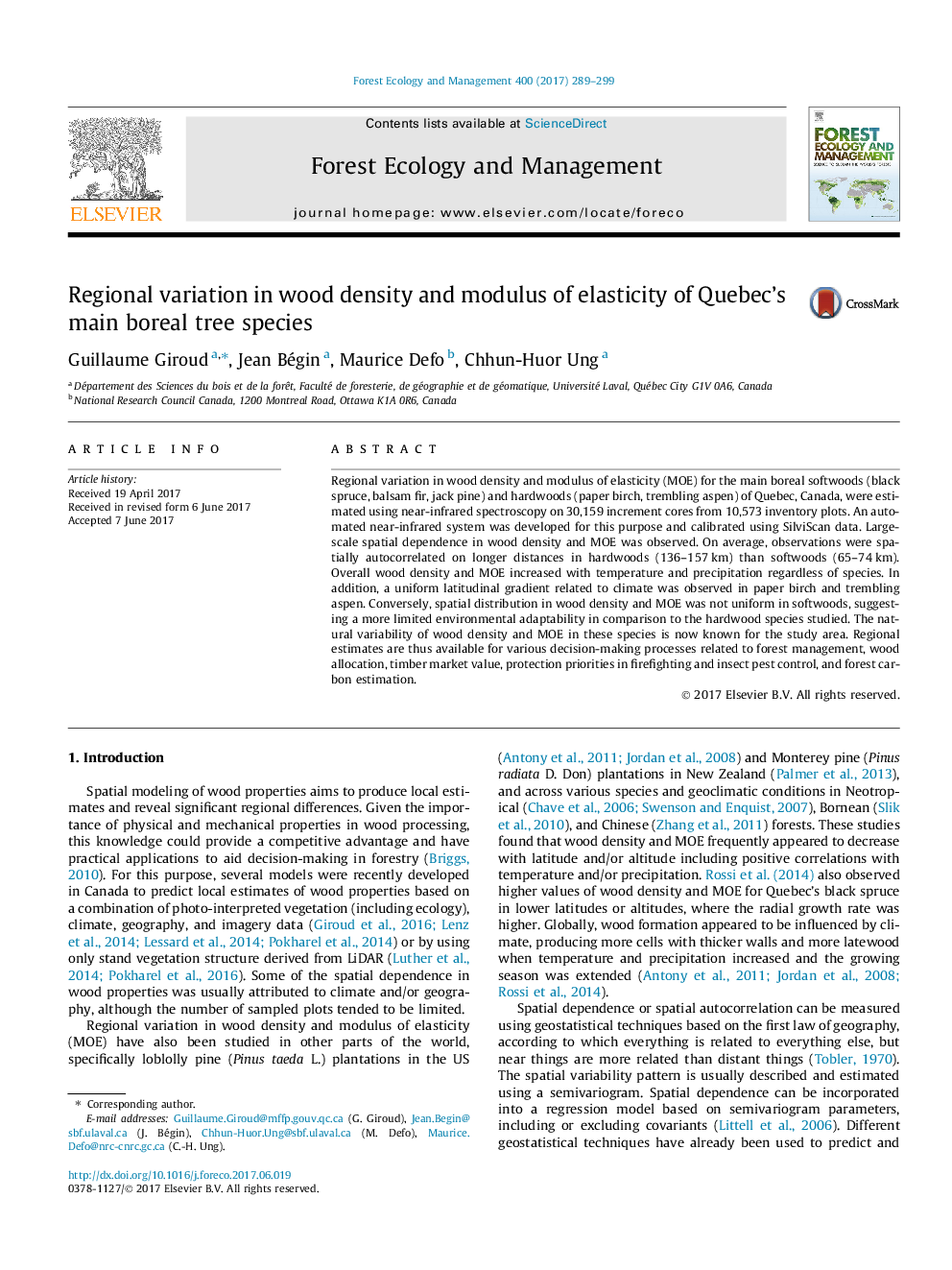| کد مقاله | کد نشریه | سال انتشار | مقاله انگلیسی | نسخه تمام متن |
|---|---|---|---|---|
| 6459248 | 1421358 | 2017 | 11 صفحه PDF | دانلود رایگان |
- Regional variation in wood density and MOE was evaluated in Quebec, Canada.
- Near-infrared spectroscopy was used to measure 30,159 increment cores.
- A multi-species near-infrared calibration was successfully developed.
- A latitudinal gradient in wood density and MOE was observed in hardwoods.
- Conversely, the spatial distribution was not uniform in softwoods.
Regional variation in wood density and modulus of elasticity (MOE) for the main boreal softwoods (black spruce, balsam fir, jack pine) and hardwoods (paper birch, trembling aspen) of Quebec, Canada, were estimated using near-infrared spectroscopy on 30,159 increment cores from 10,573 inventory plots. An automated near-infrared system was developed for this purpose and calibrated using SilviScan data. Large-scale spatial dependence in wood density and MOE was observed. On average, observations were spatially autocorrelated on longer distances in hardwoods (136-157Â km) than softwoods (65-74Â km). Overall wood density and MOE increased with temperature and precipitation regardless of species. In addition, a uniform latitudinal gradient related to climate was observed in paper birch and trembling aspen. Conversely, spatial distribution in wood density and MOE was not uniform in softwoods, suggesting a more limited environmental adaptability in comparison to the hardwood species studied. The natural variability of wood density and MOE in these species is now known for the study area. Regional estimates are thus available for various decision-making processes related to forest management, wood allocation, timber market value, protection priorities in firefighting and insect pest control, and forest carbon estimation.
Journal: Forest Ecology and Management - Volume 400, 15 September 2017, Pages 289-299
